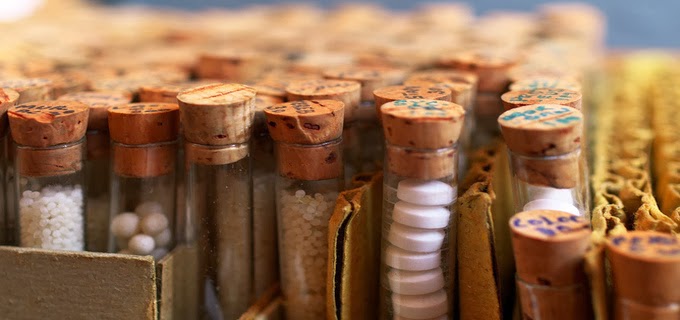symptoms, its overall picture resembles Pulsatilla. Its symptoms aggravate from heat. In Pulsatilla, the menstrual
bleeding is scanty and interrupted while in Sabina it is excessive.
The bleeding tendency is not
limited to the uterus. The nose and kidneys can also bleed. Sabina is
very useful in the treatment of excessive menstrual bleeding along
with the generalized tendency to bleed. The patient is prone to abort in the third month of pregnancy. Sometimes, the women develop small knots (cysts or
tumours) in the ovaries,
barring
pregnancy. In this condition, Sabina helps to cure the cysts of
the ovaries and also promotes conception.
Sabina is also useful in the treatment of bleeding piles. It is also very beneficial in
the treatment of kidneys becoming painfully inflamed,
associated with the passage of blood in the urine. Thus, it resembles
Pareira Brava. In Sabina, the kidneys are inflamed all over, causing constant
localised pain (not colicky). In Pareira Brava, the pain radiates
downwards along the ureter into the bladder. The stones from the kidneys
may get lodged in the urinary bladder. In Sabina, the patient has a constant urge to pass urine.
The act of urination does not relieve the urge however.
The quantity of urine passed is scant as in Cantharis.
Sabina is certainly indicated and useful, in the treatment of discharges
resembling gonorrhoeal diseases in both sexes. Even if there
is no active gonorrhoea and the patient is apparently well; if the discharge
resembles that of gonorrhoea, Sabina will be very effective.
In Sabina, the patient may experience labour-like pains, even in the
absence
of pregnancy. The uterus contracts and bears down as in labour.
This pain results in the loss of pregnancy (abortion/miscarriage).
Another symptom of Sabina is prolonged excessive
menstrual bleeding, so much so that the period-free gap may
be very short. The colour of the blood is bright red. The patient becomes
anaemic due to excessive loss of blood. The blood obviously becomes of light
colour due to dilution.
Violent pains through the uterus and the ovaries
associated with genital itching are best treated with
Sabina. The pain is not steady, rather it continuously moves upwards
or downwards. Most of the experienced homoeopaths are of the
opinion that Sabina is the best remedy
to prevent abortion. In my experience, Caulophyllum is also
very effective (see under Caulophyllum). When combined with Calcarea Carb and Murex, Sabina becomes more effective in
the treatment of prolonged menstrual bleeding, diseases of the
uterus, and the tendency to form fibroids. This prescription also prevents against the tendency to abort.
If the placental
attachment of the foetus becomes detached, threatening abortion, then the
immediate use of Sabina will obviate the loss of foetus. If the
periods are followed by copious corrosive and offensive leucorrhoea and
heightened sexual urge, then Sabina should be used. Sabina also exhibits sign of polyp formation with a
tendency to bleed, often present at the back or thighs
(natal cleft). They may prove quite dangerous.
In Sabina, the patient tends to bleed though not suddenly
and profusely.
In Millefolium, the bleeding is as if a tap has been opened. This difference must be kept in mind. Sabina is also useful in the treatment of gout. One very peculiar feature
of Sabina is that during the attack of gout, the bleeding stops altogether.
As soon as gout is under control, the patient starts to bleed again and
vice versa. Gout symptoms aggravate in a warm room. The joints
become swollen, red and shiny. There is a feeling of burning in the
chest. The taste of the mouth becomes bitter and the belly hurts. The
patient may suffer from sudden headache, which subsides only
slowly. The face and the head become congested with blood. The teeth
hurt on chewing food. The abdomen feels full. The patient may also
remain constipated.





